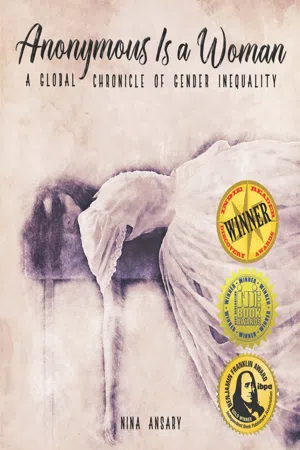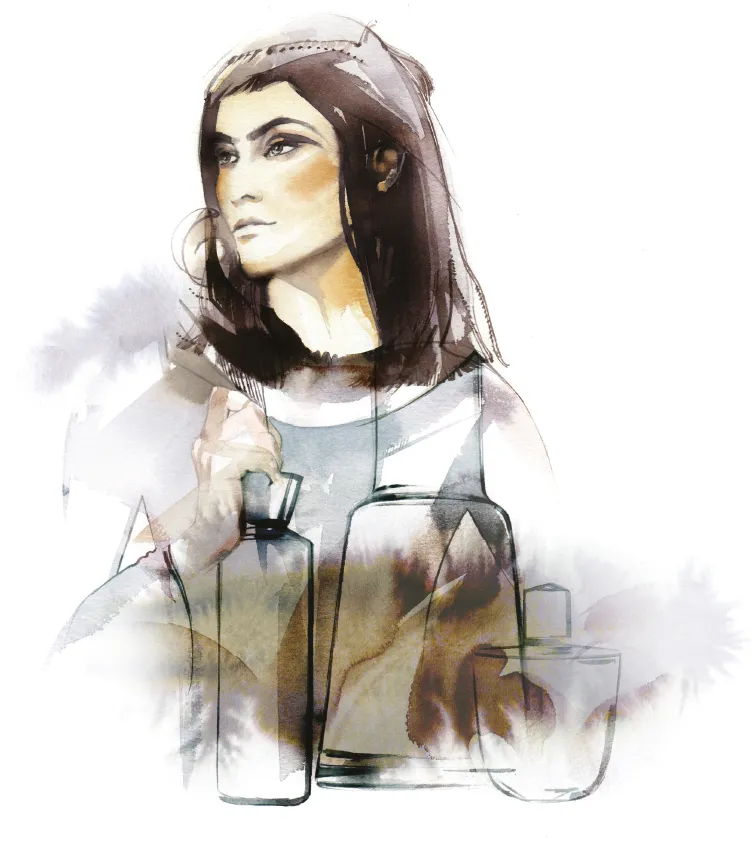![]()
Forgotten Innovators
While global statistics reveal an ongoing gender gap, evidence challenging discriminatory laws and policies reflects the benefits of a balanced, equitable world. The biographical profiles of fifty extraordinary, yet forgotten women innovators presented in this section dismantle centuries of historical bias and refute ingrained stereotypical assumptions, which continue to limit opportunities for women and girls in the twenty-first century.
Their stories represent a mere fraction of the thousands of accomplished women who have been inadequately acknowledged in world history and relegated to obscurity and anonymity despite their achievements. Illuminating these exemplary women not only expands the historical record, but also provides young girls with role models to inspire their pursuit of goals and aspirations.1
The objective was to highlight women from a range of countries, cultures, ethnicities, and fields of endeavor. All of these women were born before 1900—from 2300 BCE to 1892. A significant piece of each woman’s story is her determination to overcome gender-based barriers and obstacles. To varying degrees, these fifty individuals were born when opportunities were not readily available to women, when females were often barred from educational institutions and from holding certain positions in society, or when their achievements were underplayed and undervalued. Many of their successes were alleged to have been attained by the men with whom they worked.
It was a challenge to select only fifty women. Inclusion was based on several factors: the individual had not been widely written about, she is virtually unknown beyond her country of origin, and/or her life story was particularly illuminating with respect to the quest for gender equality.
A number of women were selected because their relative lack of recognition is in stark contrast to their male counterparts. For instance: Spanish cubist painter María Blanchard is virtually unknown, especially in comparison to her fellow Spaniard, Pablo Picasso; South African Charlotte Maxeke was born forty-three years before the revered Nelson Mandela, but her accomplishments paved the way for her country’s momentous political changes as well as its first women’s movement; and English biologist Marianne North documented and painted more than 800 plant species, a similar endeavor to that of John Audubon (whose specialty was birds), yet she has scant name recognition.
From the beginning of world history, despite formidable cultural barriers, women have developed their skills and talents, employed their intellect and creativity, and achieved distinction in diverse endeavors. Their life stories point toward a gender-balanced society beyond anonymity.
![]()
CA. 2300 BCE, AKKADIAN
WORLD’S FIRST KNOWN FEMALE ASTRONOMER
A mere 4,000-and-some-odd years had passed before the world’s first known female astronomer received an honor befitting her historic accomplishments: a crater on Mercury was named after her.1
She was revered in her lifetime. In the twenty-fourth century BCE, En Hedu-Anna was an Akkadian priestess2 —en is a title of leadership and Hedu’anna means “ornament of heaven,” the name given to her when she was installed as en-priestess.3 As astronomer Sethanne Howard4 writes, the tradition of women in science and technology begins with En Hedu-Anna: “She was the chief astronomer-priestess and as such managed the great temple complex of her city of Ur. She controlled the extensive agricultural enterprise surrounding the temple as well those activities scheduled around the liturgical year.” The responsibilities associated with her honored position “required her to make detailed astronomical calculations and observations.”5
En Hedu-Anna’s scientific calculations are known to us through her distinguished poetry, which was recorded on cuneiform tablets6—the literary medium of the day, typically small enough to fit into one’s pocket. According to Howard, poetry had a more wide-ranging function in ancient times; it was used for “stories, religious works, laws, regulations” and more.7
En Hedu-Anna has not only been referred to as the “Shakespeare of ancient Sumerian literature,” she also “used her creative talents in the written word [to spread] her ideas and beliefs.”8 One of her poems contains a clue as to her astrological endeavors:9
in the gipar10 the priestesses’ rooms
that princely shrine of cosmic order
they track the passage of the moon.11
Howard goes on to explain that “there must have been some sort of calendar keeping (astronomy) intrinsic to her position. As we know, it is from the work of these early trackers of the moon that modern liturgical calendars developed. We date Easter, Passover, and Ramadan using the work derived from the ancient Sumerians.” In another poem, En Hedu-Anna describes her work:
The true woman who possesses exceeding wisdom,
She consults a tablet of lapis lazuli
She gives advice to all lands …
She measures off the heavens,
She places the measuring-cords on the earth.12
Howard goes on to further assess this ancient poem and pay tribute to En Hedu-Anna as follows: “This is the work of a scientist … to measure off the heavens is to engage in astronomy. To measure the Earth is surveying as well as astronomy. These are all technical subjects requiring great skill to accomplish … En’Hedu’anna is our first woman of power and scholarship whose name we know, and the last in a long line of unknown powerful women of the past who followed the stars and the cycles of the Moon.”
In a journal article entitled “Science Has No Gender: The History of Women in Science,” Howard poignantly states, “Science is a traditional role for women. For over 4,000 years of written history women have participated in this great human adventure. Science and technology are neither new nor difficult for women any more than they are for men.”13
In “measuring off ” the heavens and placing the “measuring-cords on the earth,” En Hedu-Anna was one of the first to partake in that boundless adventure.
![]()
CA. 1200 BCE, BABYLONIAN
WORLD’S FIRST CHEMIST
The world’s first recorded chemist was a woman—and she lived over 3,000 years ago. The chemist’s identity was discovered in a cuneiform tablet dated around 1200 BCE in Babylonian Mesopotamia. Her name was Tapputi, but she was also known as Tapputi-Belatekallim.1 (Belatekallim is her title—“mistress of the palace.”)
As the overseer/mistress (manager) of the Mesopotamian Royal Palace, Tapputi was a powerful figure in the Mesopotamian government. Her legacy, however, is not her impressive position as a manager; it is the scientific breakthroughs she made that resulted in a product that women (and men) throughout the centuries have consistently used in their personal grooming regimen— perfume. But in ancient Babylon, perfume was not solely used for personal enhancement. Scented substances were used for medicinal purposes and were also an integral part of religious rituals.2
According to the Getty Villa’s education specialist Erin Branham, using perfume in various public and private spaces was a near-necessity in the ancient world, especially among those of the privileged classes.
To us the ancient world would perhaps be most overpowering in terms of smell. Sweating men and animals and their waste filled a city’s streets, making it vital to set off sacred spaces as well as those of luxury by making them smell sweet. Fragrance was everywhere in the ancient world, from scented oils used to adorn the body to incense burnt in homes and temples.
Perfumes had many uses and meanings: they could be holy, used in the worship of the gods or the burial of the dead; they could be a symbol of status and superiority, used by athletes, aristocrats, politicians, and royalty; they could be medicinal, used to relieve ailments of the lungs or skin.3
As the royal perfume maker, Tapputi developed a unique process for scent extraction that provided the basis for creating modern-era perfume. Working alongside another female chemist, whose name survives only partially as “[–]ninu,” Tapputi recorde...





